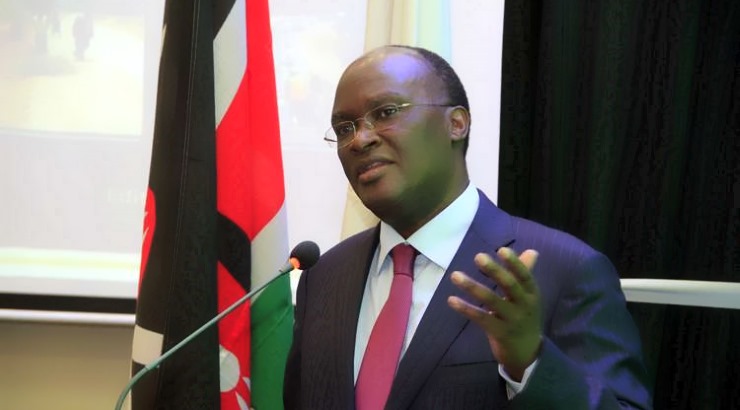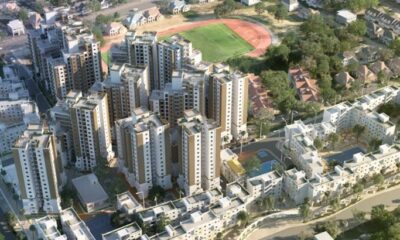Residential Projects
Big fortunes await sector as cheap homes project begins
Among those expected to make big fortunes are suppliers of alternative building technologies.

Players in the building and construction sector are positioning themselves for a Sh2.6 trillion housing boom as the government prepares to launch a project that seeks to deliver a million low cost homes into the market in the next five years.
From manufacturers of cement, and decorates to roofing sheets producers and steel fabricators, thousands of industry players are expected to make significant revenues from the project whose pilot scheme begins next month.
Among those expected to make big fortunes are suppliers of alternative building technologies that the government is endorsing as a means to cut construction costs.
According to Transport, Urban Infrastructure and Housing Cabinet Secretary James Macharia, the government will provide public land to private investors who will then take advantage of various building technologies and economies of scale to deliver “truly affordable” homes for citizens.
“We have land in Mavoko, Ngara, Ridge road where we will kick start construction of houses, as the government embarks on achieving the agenda of housing within four years,” Mr Macharia said at a recent public function.
He said the low cost housing scheme will be divided into 56 projects, with each country getting one project while Nairobi, Mombasa, and Kisumu will be allocated more than one development.
Under the pilot project, a total of 8,000 low-cost two-and three-bedroom houses will be built on a 55-acre parcel of land that has been provided by the government – each of which will be sold to the public for between Sh1 million and Sh1.5 million.
A total of Sh2.6 trillion will be spent to build a million homes across Kenya in the next five years as the country seeks to bridge its national housing gap that currently stands at an estimated 1.85 million units.
According to the government, 800,000 houses will be built under the private public partnership (PPP) model while the remaining 200,000 homes will be built under a social housing scheme – where a unit will be sold for between Sh500,000 and Sh700,000.
READ: How Kenya plans to deliver homes for as low as Sh500,000
Social housing refers to dwellings provided for rent or sale at a fairly low price by housing associations and local governments. It is typically offered to citizens on extremely low incomes.
The government has pledged to offer private developers about 7,000 acres of land as part of an incentive package.
The government is in the process of establishing Kenya’s first ever land bank to serve local and international investors in a move aimed to address the challenges faced by investors seeking to acquire land for real estate projects.
The Ministry of Land is currently preparing to conduct a detailed audit of several government-owned entities to establish those that hold more land than they need, with a view to having them release the excess parcels to the land bank.
Some of the big institutions under the ministry’s radar include the Kenya Broadcasting Corporation, International Livestock Research Institute, East African Portland Cement Company, Kenya Prisons, the Ministry of Agriculture and Livestock, Numerical Machining Complex, and several public universities.
According to the ministry, whatever amount of land will be found to be in excess will be released and gathered together in a land bank that will contribute towards the State’s goal of provision of affordable housing to Kenyans.
“It is noted that quite a number of public institutions hold more land than they require. It is therefore proposed that they release the land for government projects. Institutional land will be audited and limited to certain acreages based on land use guidelines,” the Ministry said in a statement in January.
“Some of the institutions’ land happens to be very strategic and prime yet government projects lack space while members of the public consider the lands idle hence subject to invasions and squatter settlements.”
Basically, a land bank is a public or community-owned entity created to acquire, manage, maintain, and repurpose vacant or abandoned properties.
The purpose of land banks is to rehabilitate or demolish inadequate properties or get them into hands of new owners who will improve them in accordance with the interests of the community.
Although the actual sizes of the proposed homes are yet to be revealed, the pricing of the State-backed homes is expected to disrupt the ‘low-cost housing” market that is currently dominated by small housing development firms and saccos – whose units are sold for more than Sh3.5 million.
Early last year, the World Bank urged the Kenyan government to come up with tangible incentives that motivate property developers to shift focus to truly affordable houses that can be acquired by low income earners.
This came amid revelations that house prices in the country had recorded a ten-fold rise in the past seventeen years – pushing many Kenyans into slums.
The cheapest home in Nairobi, said the World Bank, is now priced at Sh4 million up from Sh500,000 in 2000. This has rendered 90 per cent of Kenyans incapable of acquiring the cheapest home.












